November weather outlook: Can Florida expect more storms as hurricane season nears its end?
ORLANDO, Fla. - With a few weeks left of the 2023 Atlantic hurricane season, what can Florida expect? FOX 35 Storm Team Meteorologist Noah Bergren breaks down everything that could happen – and what has happened in the past – as the 2023 Atlantic hurricane season nears its end on Nov. 30.
What to expect as hurricane season comes to a close
Over the coming weeks, the Atlantic Ocean basin looks pretty hostile. While ocean surface temperatures still remain at or above average this late into the season, increasing impacts from El Niño mean that formation in the open Atlantic will be rather difficult.
Remember, hurricanes fundamentally form from two pivotal meteorological ingredients: warm water and light winds aloft.

Strong winds aloft can rip apart hurricanes and/or inhibit them from forming. The term for that is "wind shear" in the weather world – an ingredient needed for tornadoes to occur, but bad for hurricanes.
Good news is the wind shear will remain strong or even get more prevalent over the Atlantic – something that is quite common for late fall and winter in an El Niño pattern. That said, the Caribbean is one area that can still give birth to storms.
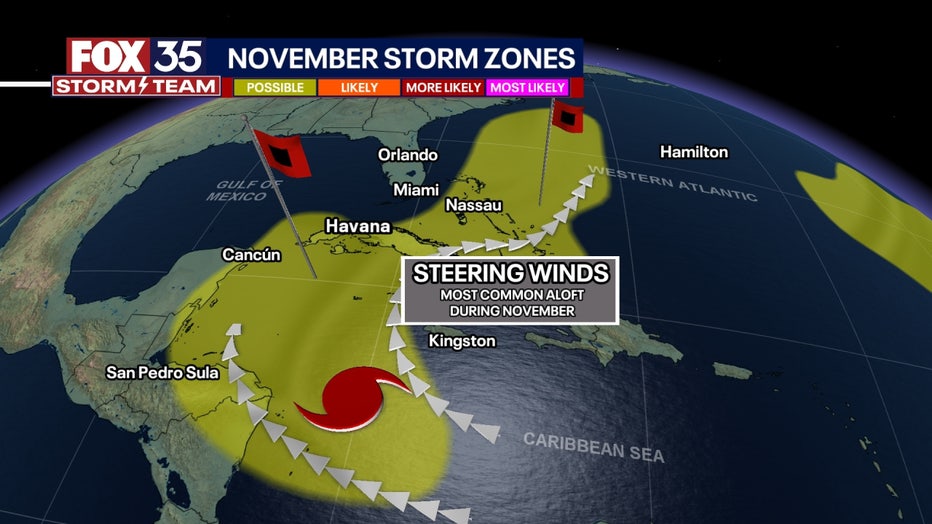
The area depicted in the graphic above, going across Cuba and off Florida's east coast, shows where storms can form, not where they're anticipated to end up. This is because the region is typically shielded from the more hostile wind shear over the Atlantic this late in the season.
The area shaded in yellow does not mean storms can't track outside this area, but they're historically most likely to form in these highlighted areas during November.
There are some hints that one final storm may try to spin-up in the Caribbean next week, but chances of that seem rather low for now.
When does hurricane season end in Florida?
The Atlantic hurricane season typically runs from June 1 - Nov. 30 – a whopping five months. But, that doesn't mean tropical systems will not form outside those windows.
In fact, this year, a subtropical system formed in early January about 300 miles north of Bermuda. In May, after reviewing the data, the NHC declared that system to be the first official cyclone of the 2023 system.
Is it rare for hurricanes to hit Florida in November?
Generally, the majority of hurricanes and tropical systems form before Nov. 1. However, certainly far from all of them.
In fact, even though far fewer storms occur in November, there have been some impactful, less common events to hit the Sunshine State.
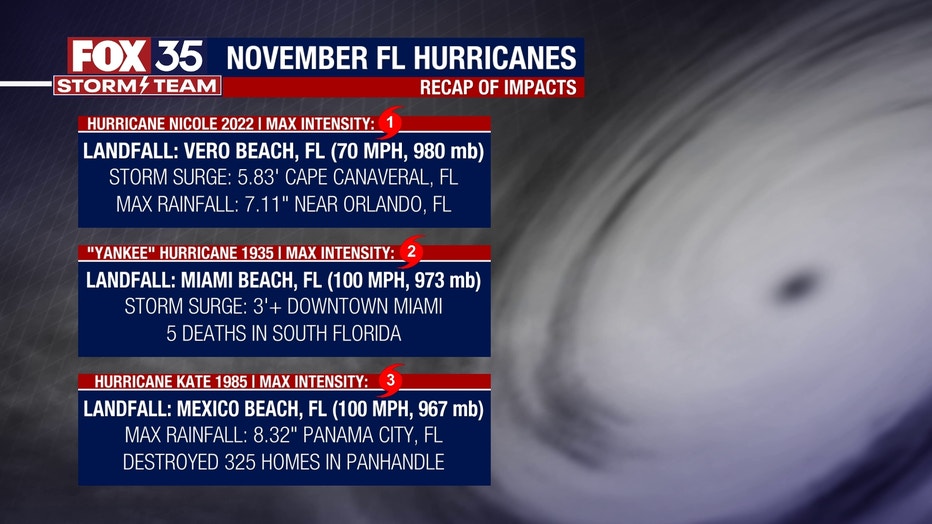
Hurricane Nicole was the most recent in November 2022. It devastated many communities on the east coast of Florida with erosion and surge.

Hurricane Nicole devastation: 6 months later
Residents along Lake Harney in Central Florida still cannot live at their homes due to storm damage from six months ago.
LOOKING BACK: Florida mom pinned under truck after tree snapped during Hurricane Nicole
Furthermore, since the mid-1800s, only three hurricanes have ever hit Florida at hurricane strength – Nicole in 2022, Kate in 1985 and an unnamed hurricane in 1935.
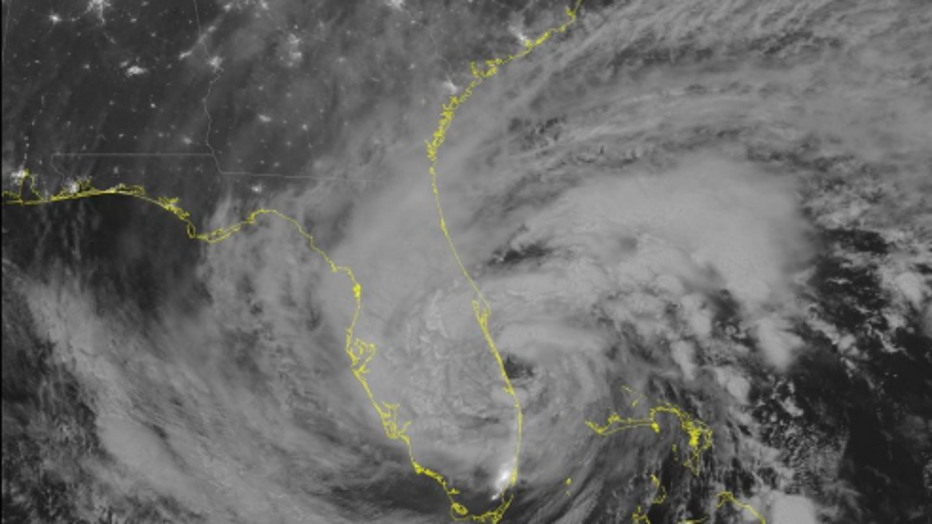
Hurricane Nicole on November 10, 2022 (Photo: NOAA)
The latter is loosely referred to as the "Yankee" hurricane because it came from the north, then hit South Florida.
Hurricane Kate was at one point a Category 4 hurricane and made landfall in the Florida Panhandle. It was the first hurricane to make landfall in the Florida Panhandle since Hurricane Eloise in 1975.
Fifteen other storms have hit Florida since the mid-1800s, which were either tropical storms or tropical depressions. The most recent of those other storms included, but were not limited to, Eta in 2020, Ida in 2009, Paloma in 2008, Mitch in 1998 and Gordon in 1994.
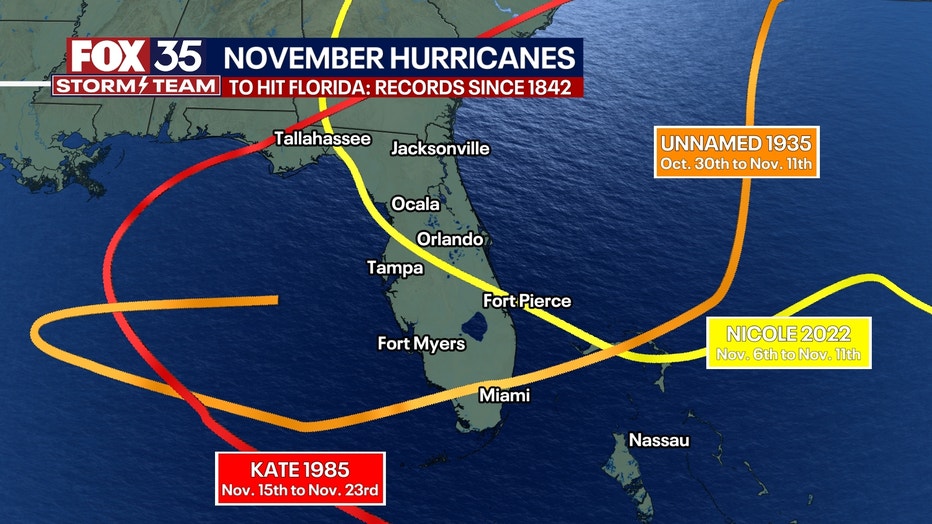
Can hurricanes form in the Atlantic in December after hurricane season ends?
Yes! They are exceptionally rare to impact Florida, however.
Only one tropical system has ever impacted Florida in December – and it was a tropical storm in 1925 that tracked northeast in direction from Fort Myers to Melbourne. It had 60 mph winds at landfall on Dec. 1, 1925 when it came ashore in Fort Myers.
HURRICANE NAMES: What happens if we reach the end of the 2023 hurricane name list amid 'above normal' season?
Notice the red shaded area on the image below – there have only been nine hurricanes to ever develop in the entire Atlantic basin in December. None came close to the United States, though. The closest was an unnamed Category 1 hurricane that did a loop off the North and South Carolina coastlines.
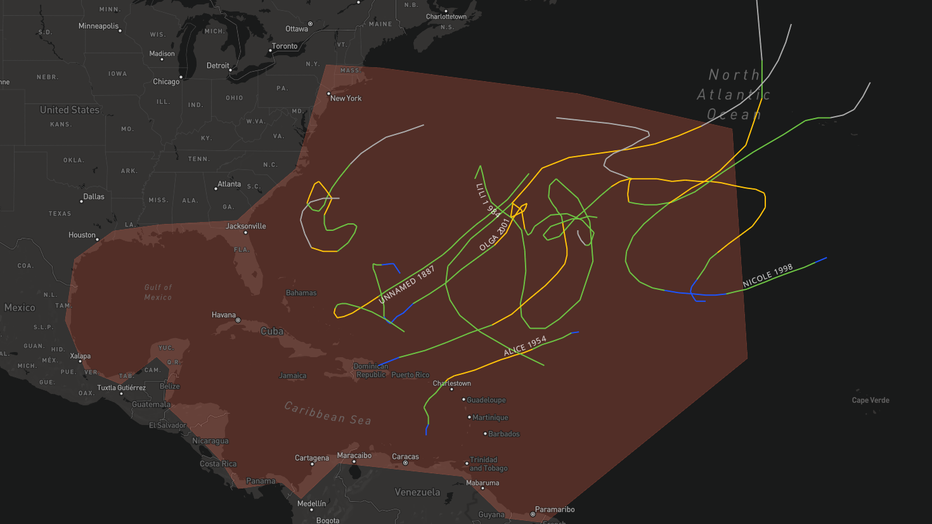
The most recent hurricanes to have formed in December were Epsilon in 2005, Olga in 2001, Nicole in 1998 and Lili in 1984.
The main reason why development is so uncommon in December is because by that point, ocean surface temperatures are too cool to support or maintain tropical convection. Even if the wind shear went away, the water later in the year is so cold, compared to earlier in the year, that it would be very hard for something to form.


